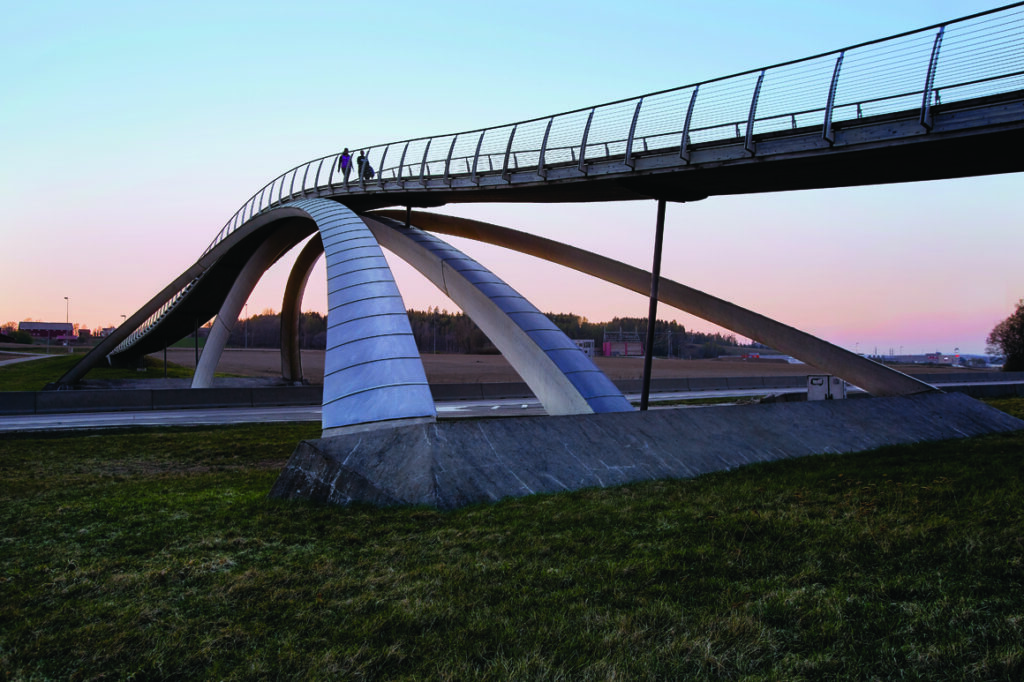The Cruxio Bridge
A practical tool inspired by a Renaissance Genius

Design
At Cruxio, we have used the metaphor of a bridge for years to represent how strategic stories enable business communicators to overcome obstacles on their path to a better future.
The structure of these stories, and of the Cruxio Bridge, is specific: it’s critical that arguments supporting a persuasive communication are independent of one another. Why? Because the failure of one argument does not necessarily mean the whole case will collapse, provided that the remaining arguments stand.
Construction
The model bridge comprises more than 90 individual pieces that are assembled and glued by hand. The laser-cut layers are held in place by magnets. We use beautiful cherry wood for the road surface to distinguish it from the remaining structure, which has the sole purpose of supporting the audience’s smooth journey across the surface of the bridge.
We are grateful to Garrett Boon of Boon Woodworking who led us to the da Vinci footbridge in Norway. With his creative help and woodworking skills, Garrett enabled us to take the Cruxio Bridge from prototype in November 2017 to small-scale production in June 2019 … we learned a lot about accurately bending wood through those years!
The Cruxio Bridge’s Origin
The wooden model Cruxio Bridge draws on a 1502 design by Leonardo da Vinci. His design would have solved a major problem for Sultan Bayezid II who wanted a bridge to span the Golden Horn inlet—connecting Istanbul with Galata—while still allowing tall sailing ships to pass into and out of the inlet. The usual solution of the era would have been a masonry bridge comprising a series of semicircular arches—at least ten in this case—but that kind of construction would have prevented ships from passing.
Da Vinci envisioned a high, 900-foot (274 meters), single-span, parabolic arch sweeping across the Golden Horn. Built of stone and relying purely on compression for structural stability (no mortar) it would have been the longest bridge of its time. It also would have worked!
Unfortunately for history and for us, the Sultan took a pass … but, 500 years later, da Vinci’s design was brought to life as a bicycle and footbridge near Oslo, in Norway. The Norwegian interpretation features three arches that independently support the road above. These independent arches became a vital feature of the wooden model Cruxio Bridge.
